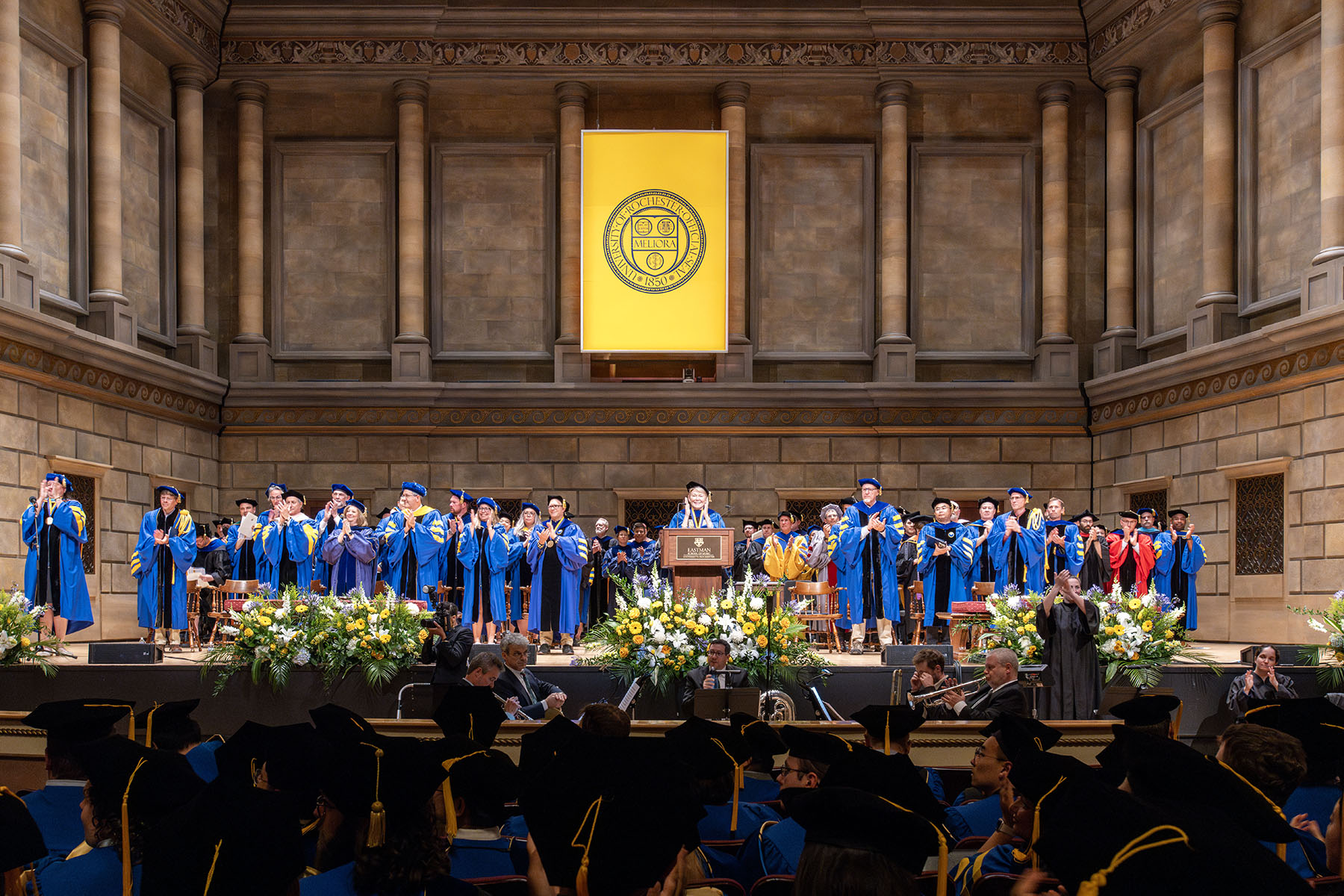NLUF User Program
Providing Broad Access and Developing Next-Generation Scientists
The National Laser Users’ Facility (NLUF) program at the Laboratory for Laser Energetics (LLE) has been at the forefront of high-energy-density physics (HEDP) and Inertial Confinement Fusion (ICF) research for 45 years, advancing discovery science and measurement techniques while developing the next generation of scientific talent.
NLUF provides academic and industrial scientists and students with access to the world-class Omega Laser Facility for groundbreaking basic research in HEDP and ICF. Funded by the Office of Experimental Sciences (OES) of the National Nuclear Security Administration (NNSA), this program enables users to conduct experiments without incurring direct facility charges. Limited target support to NLUF experiments is provided by General Atomics and funded by the NNSA/OES.

NLUF Research Areas
The NLUF program supports diverse research areas, including but not limited to:
- Laboratory astrophysics
- HED hydrodynamics
- High-pressure material properties and planetary science
- Warm dense matter
- Magnetized HED plasmas
- Nonlinear optics of plasma and laser-plasma interactions
- High-field science and intense beam physics
- Atomic physics
- Nuclear physics
- Instrumentation development
Accessing Omega Through NLUF
NLUF is administered by a full-time program manager at LLE. Every two years, the program opens its doors to a new cohort of innovative projects, inviting scientists and students from across the United States to submit their proposals.
When the call for proposals is announced, researchers from U.S. universities, higher education institutions, non-profits, and private-sector organizations craft their research plans, outlining how they intend to leverage the power of the Omega Laser Facility to push the boundaries of high-energy-density physics, expand the scientific ecosystem, and impact education and workforce development.
Once submitted and passed an initial compliance review, these proposals undergo a rigorous merit review process. Expert panels carefully evaluate each submission, considering its scientific merit, feasibility, and broad impact. This competitive selection ensures that only the most promising and well-conceived projects make it through to the experimental phase. Successful applicants gain access to facility time on the OMEGA and/or OMEGA EP laser systems with the associated experimental support, including targets, to carry out experiments in the next two fiscal years.
While the principal investigators must be from U.S. institutions, the collaborative spirit of NLUF extends beyond borders. Researchers from Department of Energy national laboratories and international institutions are welcomed as collaborators, enriching the projects with diverse expertise and perspectives.
As experiments unfold and data is collected, NLUF researchers are expected to share their findings with the broader scientific community. Publishing results in peer-reviewed journals and presenting at conferences is an integral part of the NLUF experience.

Impact on Workforce Development
NLUF plays a crucial role in shaping the future of HEDP and fusion research, demonstrating the program’s success in cultivating talent for the nation’s scientific workforce in these areas of research and technology.
- 100+ graduate students and postdoctoral researchers involved in NLUF research annually
- 60 NLUF PhDs awarded in the last ten years
- Over 50% of NLUF PhD graduates have joined DOE national laboratories
Acknowledgement of NLUF user program:
NLUF users must include an acknowledgment of the NLUF user program and federal support as well as a disclaimer in their publication based on or developed under the NLUF project. Publications must also go through LLE’s Review and Release procedure to be documented prior to submission and should be submitted through LLE’s Publications ticketing system (for LLE coauthors) or forwarded to the NLUF Program Manager for projects without an LLE coauthor.
Acknowledgment for NLUF user program support:
“The experiment was conducted at the Omega Laser Facility with the beam time through the National Laser Users’ Facility user program. This material is based upon work supported by the Department of Energy [National Nuclear Security Administration] University of Rochester “National Inertial Confinement Fusion Program” under Award Number(s) DE-NA0004144.”
“Work performed under the auspices of the U.S. Department of Energy by General Atomics under NNSA Contract 89233124CNA000365”
Disclaimer:
“This report was prepared as an account of work sponsored by an agency of the United States Government. Neither the United States Government nor any agency thereof, nor any of their employees, makes any warranty, express or implied, or assumes any legal liability or responsibility for the accuracy, completeness, or usefulness of any information, apparatus, product, or process disclosed, or represents that its use would not infringe privately owned rights. Reference herein to any specific commercial product, process, or service by trade name, trademark, manufacturer, or otherwise does not necessarily constitute or imply its endorsement, recommendation, or favoring by the United States Government or any agency thereof. The views and opinions of authors expressed herein do not necessarily state or reflect those of the United States Government or any agency thereof.”
